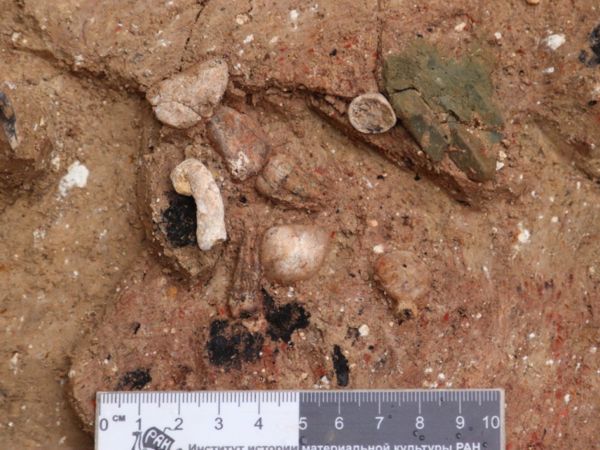A team of archaeologists from the Institute of History of Material Culture of the Russian Academy of Sciences made significant Paleolithic discoveries during the Kostenkovo archaeological expedition in the Voronezh region of Russia.
The finds include a blank slate pendant with an unfinished hole, two isolated adult teeth, and an unusually shaped spatula made from the blade of a young mammoth.
The teeth were found in a cluster with other items, including coral calyxes, sea lilies, shale pebbles and a cave lion incisor. “Probably, all these items were in something similar to a ‘pouch’, the contents of which may have been used for ritual (magical) purposes,” said senior researcher Aleksander Bessudnov.
The discovery of these anthropological remains is considered particularly valuable as they are rare for Paleolithic settlements dating back 40,000 to 42,000 years in Eurasia. Most often, such settlements contain only isolated bones and teeth, and burials from this period are yet to be discovered.
The well-preserved spatula provides insights into the manufacturing techniques and usage of such tools during that time period.
These findings were reported by TV BRICS.




